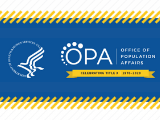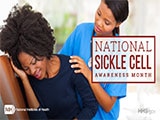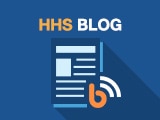Building Your Own Safety Net: Developing wealth, financial independence, and social capital in high-poverty communities
Consistent with President Trump’s Executive Order on Reducing Poverty in America by Promoting Opportunity and Economic Mobility, HHS’s Strategic Plan sets goals for HHS to encourage self-sufficiency and personal responsibility, and eliminate barriers to economic opportunity, and to prepare children and youth for healthy, productive lives. This blog is part of the Self-Sufficiency Series: Solutions from the Field, which profiles local programs from across the country finding solutions to accomplish these goals.
Families living in poverty face a number of obstacles on the road to economic empowerment. Finding a steady job, saving for the future, and taking care of children can be especially daunting when facing financial and health challenges. The Temporary Assistance for Needy Families (TANF) program, operated by the Administration for Children and Families (ACF) in HHS, provides states with block grants to design and operate programs to help families in need achieve financial self-sufficiency and end dependence on government benefits. Approximately 1.41 million families (3.57 million individuals, 73% of whom are under the age of 18) receive TANF assistance each month, with an average monthly assistance of $398.
In addition to providing cash assistance, TANF programs also provide recipients with help in finding and keeping a job including job readiness and job search activities. HHS, along with the President’s Executive Order on Reducing Poverty in America, recognizes the value of helping individuals develop or expand their social support in order to achieve this goal. Some job readiness programs across the country are already demonstrating ways that this can be done. One such program is the Building Wealth and Health Network (The Network), run by the Center for Hunger-Free Communities, a nonprofit organization in Philadelphia, PA. The program focuses on building social as well as financial capital. The Network serves TANF customers, who are allowed to count participation towards their required work activities for TANF.
Social capital – or the connections, networks, and information flows among individuals, organizations, and communities – has a positive influence on individuals and communities’ well-being. Research has shown that individuals with high levels of social capital are happier, are healthier, find better jobs, and live longer.
Several aspects of the program aim to help increase families’ personal responsibility and reduce barriers they face to economic mobility, key priorities for HHS. For example, the Network provides a financial empowerment class for TANF recipients, with a cohort model and emphasis on group support. Over 16 sessions, with two classes each week, participants are taught about fundamental financial terms and resources, and use goal-setting strategies and other techniques to apply their newfound skills in their daily lives. The curriculum was developed especially for families that have been exposed to violence and adversity, and is regularly updated and adjusted based on their feedback. The program also helps participants to open a savings account with a credit union, as many recipients are unbanked, have poor or no credit history, and possess few or no assets. The Network also provides a one-to-one savings match for a year.
While the courses’ content works to build skills of economic self-sufficiency, the peer support model that builds social capital is essential in fostering self-sufficiency and sustainability. The Network uses a trauma-informed perspective to address the physical and mental health needs of parents experiencing poverty; this approach aims to buoy the whole family by helping the caregiver. By sharing their knowledge and experience with each other in a supportive space, parents build a sense of mastery, control, and connectedness – assets of social capital.
A study by Drexel University researchers found that this combination of financial and social capital empowerment has led to measurable success for participants. They quickly bond and say that they continue to come back because they’re attached to the people in their group. That randomized controlled trial found that, over the course of the program, parents in The Network reported fewer depressive symptoms, reduced economic hardship, and increased self-efficacy. They also reported higher earnings and were more likely to be employed compared to those not in the program.
These results show the power of communities: when people come together, they have the opportunity to help themselves and others. The Network shows one example of how individuals can use this power to support each other in moving toward self-sufficiency. Efforts like these and others by HHS-funded TANF agencies help promote progress toward HHS’ goal of eliminating barriers to economic mobility.

Celebrating America’s Health Centers: Our Healthcare Heroes
Preparing Youth for Success in West Virginia


